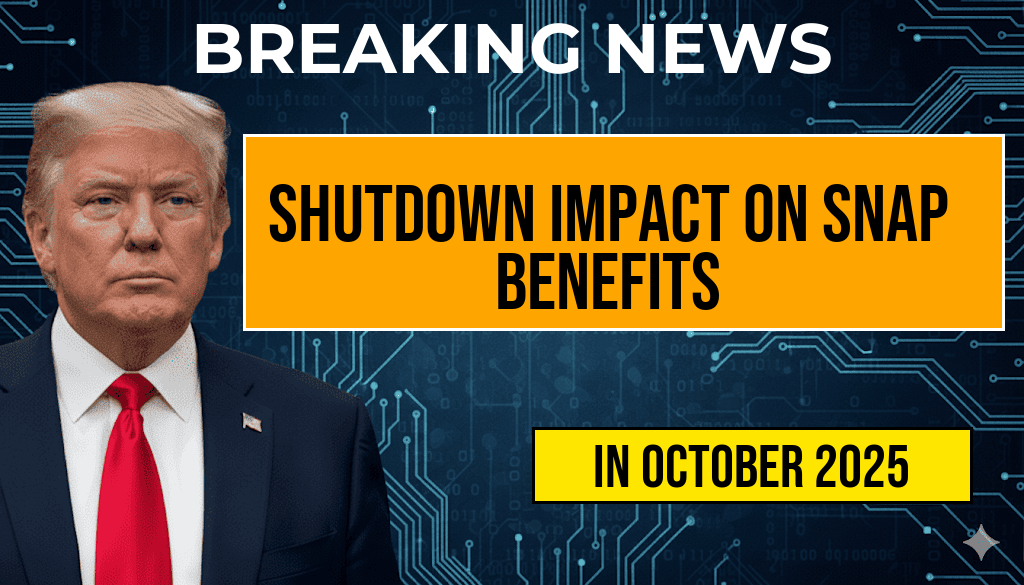The recent threat of a government shutdown has raised concerns across multiple social service programs, particularly the Supplemental Nutrition Assistance Program (SNAP), commonly known as food stamps. If a shutdown occurs, it could disrupt benefits for millions of Americans who rely on these essential supports to meet their nutritional needs. While some SNAP recipients may see continued assistance through existing funding, others could face delays or reductions depending on the duration of the shutdown and federal response measures. The potential impact has sparked widespread debate among policymakers, advocacy groups, and recipients alike, emphasizing the importance of understanding how such a government impasse might alter access to food assistance programs.
What Is the Current Status of SNAP Funding Amidst the Shutdown Threat?
As of late April 2023, congressional leaders remain deadlocked over budget negotiations, with the possibility of a government shutdown looming if an agreement isn’t reached by the deadline. The federal budget process involves negotiations that determine funding levels for programs like SNAP. Should a shutdown occur, the Department of Agriculture (USDA), which administers SNAP, has contingency plans to maintain benefits temporarily through existing funds. However, these measures are finite, and prolonged shutdowns could jeopardize ongoing payments.
How Might a Shutdown Affect SNAP Benefits?
Temporary Continuation of Benefits
In many cases, SNAP benefits are funded through annual appropriations, with funds often allocated at the beginning of each fiscal year. If current funding is already secured, recipients may continue to receive benefits for a limited period. The USDA has historically maintained benefits during short-term shutdowns by drawing from existing reserves, ensuring that most beneficiaries are unaffected immediately.
Potential Disruptions and Delays
Prolonged government shutdowns can lead to several issues:
- Delays in benefit issuance: New applications or recertifications might be delayed, causing gaps in assistance.
- Reduction in benefits: Some states rely on federal funds to supplement benefits; funding shortages could result in reduced monthly assistance.
- Impact on administrative functions: Processing of claims, issuance of EBT (Electronic Benefit Transfer) cards, and other administrative tasks may slow down or halt temporarily.
State-Level Responses and Mitigation Strategies
States have varying capacities to buffer the impact of federal funding pauses. Some may allocate state funds to sustain benefits temporarily, while others might prioritize critical administrative functions. For example, states like California and New York have sizable reserves and infrastructure to mitigate disruptions, but even these may face challenges if the shutdown persists beyond a few weeks.
Implications for Vulnerable Populations
Individuals relying solely on SNAP benefits, including low-income families, seniors, and people with disabilities, are most at risk during funding interruptions. Food security concerns escalate as delays in benefits can lead to skipped meals and increased reliance on emergency food programs. Advocacy groups warn that extended shutdowns could exacerbate existing hardships, particularly in communities with limited access to alternative resources.
Expert Opinions and Policy Debates
Policy analysts emphasize that while contingency plans can mitigate short-term effects, they are not substitutes for stable, ongoing funding. Experts warn that repeated shutdowns undermine public trust and complicate efforts to address food insecurity. Some lawmakers advocate for bipartisan agreements to ensure uninterrupted SNAP funding, citing the program’s role in preventing hunger and supporting economic stability.
Summary Table: Potential Impact Scenarios of a Government Shutdown on SNAP Benefits
| Scenario | Duration | Expected Impact on SNAP Benefits |
|---|---|---|
| Short-term (<2 weeks) | Few days to a week | Most beneficiaries continue to receive benefits; minor delays possible |
| Medium-term (2–4 weeks) | Several weeks | Potential delays in new applications and recertifications; some administrative disruptions |
| Long-term (>4 weeks) | Over a month | Widespread benefit reductions; risk of food insecurity increases significantly |
Looking Ahead
As negotiations continue, the federal government’s ability to sustain SNAP funding remains a critical concern. The Biden administration has reiterated its commitment to protecting food assistance programs, yet the political landscape suggests uncertainties ahead. For recipients and advocates, staying informed about developments through official sources, such as the USDA (USDA SNAP page), is essential. The broader issue underscores the importance of resilient social safety nets that can withstand political impasses and ensure that vulnerable populations do not face hunger due to government gridlock.
Frequently Asked Questions
What is a government shutdown and how does it affect SNAP benefits?
A government shutdown occurs when federal funding is temporarily halted due to political disagreements, which can lead to disruptions in SNAP benefits (Supplemental Nutrition Assistance Program) by delaying or suspending benefit issuance for eligible recipients.
Will SNAP recipients experience immediate benefit reductions during a shutdown?
Typically, SNAP benefits are issued regularly, but during a government shutdown, there is a risk of delays or funding interruptions. However, some states may continue to distribute benefits using existing funds for a limited time.
Are SNAP benefits guaranteed during a government shutdown?
While SNAP benefits are federally funded, a shutdown can cause uncertainty. Many states rely on federal funds, and if these are exhausted, recipients might face benefit disruptions. It’s important to stay informed through official updates.
What can SNAP recipients do if their benefits are delayed or interrupted?
If SNAP benefits are delayed, recipients should contact their local SNAP office for guidance. Some states may provide emergency assistance or extend benefits once the shutdown ends. Planning ahead and maintaining food resources is advisable.
How long do SNAP disruptions typically last during a government shutdown?
The duration of SNAP disruptions depends on the length of the government shutdown. Short-term shutdowns may have minimal impact, but prolonged closures could significantly affect benefit distribution until full funding is restored.

Leave a Reply